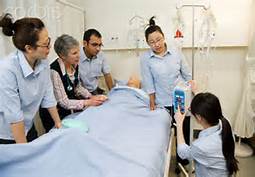
Comments? Contact IEE.
1. Objectives
2. Preparation in Advance
3. The Module
Clinical Simulations
Standardized patients — actors who are trained to portray patients consistently on repeated occasions — are often incorporated into objective structured clinical examinations (OSCEs), which consist of a series of timed “stations,” each one focused on a different task. Since 2004, these examinations have been part of the U.S. Medical Licensing Examination that all senior medical students take.39
Checklist. The observing faculty member or the standardized patient uses either a checklist of specific behaviors or a global rating form to evaluate the student’s performance.40 The checklist might include items such as “asked if the patient smoked” and “checked ankle reflexes.” The global rating form might ask for a rating of how well the visit was organized and whether the student was appropriately empathetic.
Stations. A minimum of 10 stations, which the student usually visits over the course of 3 to 4 hours, is necessary to achieve a reliability of 0.85 to 0.90.41 Under these conditions, structured assessments with the use of standardized patients are as reliable as ratings of directly observed encounters with real patients and take about the same amount of time.42
Module Editor
Bethany Sacks, MD, MEd
Assistant Professor of Surgery
Assistant Program Director, Department of Surgery
Surgery Clerkship and Curriculum Director
Core Faculty in the Colleges Advisory Program
Johns Hopkins University School of Medicine
